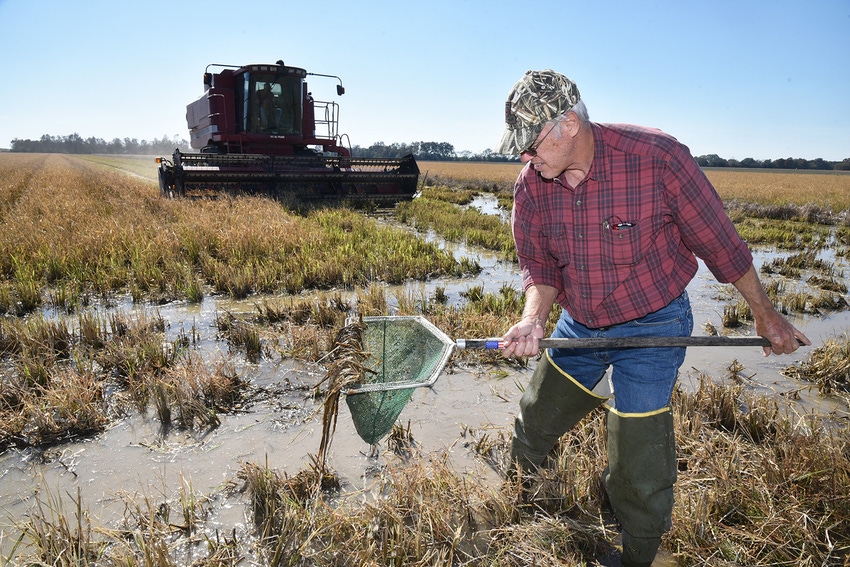November 21, 2019

An LSU AgCenter and Louisiana Sea Grant agent is studying the effects of crawfish production following a second crop of rice.
Mark Shirley is conducting the study requested by farmers who want to know to what extent harvesting a second rice crop will affect their crawfish.
“These days, rice farmers are trying to get every bit of value out of their crawfish crop in addition to their rice crop,” Shirley said.
The study, funded by the Louisiana Rice Research Board, will try to determine how food for crawfish, habitat, water quality and crawfish populations are affected by harvesting a second rice crop.
The project is underway at the South Farm of the LSU AgCenter H. Rouse Caffey Rice Research Station.
On one 7.5-acre field, an initial crop of rice was harvested in August. The field was then flooded, but no second crop was harvested. On the second 7.5 acres, the first crop was harvested in August and the second crop was cut Nov. 19 with several inches of water flooding the field.
Rice straw from harvesting a second crop will decompose in the flood, Shirley said. That usually results in lower water quality because dissolved oxygen will be removed from the decomposition, reducing the amount of food available for crawfish in the spring.
“So, it’s a question of how much damage do you have by harvesting the second crop,” he said.
The field with the second crop was left flooded for the second harvest because draining it would have killed most of the crawfish, he said.
Some farmers have asked about the possible benefit of using a stripper header on a harvester that leaves more of the plant intact and could have less impact on water quality. Further study may explore that alternative, Shirley said.
Shirley is optimistic about the upcoming crawfish season. Cooler temperatures and rain in October provided needed moisture that allowed adults to emerge from their burrows.
“Conditions for crawfish are actually looking pretty good,” he said.
About the Author(s)
You May Also Like




